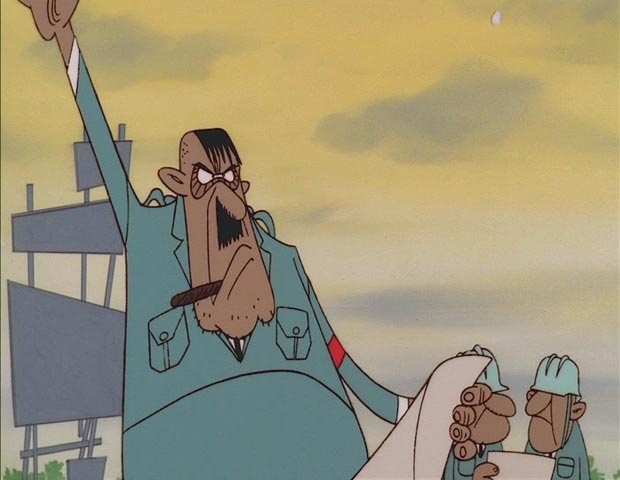The first half of Osamu Tezuka’s Legend of the Forest is a history of animation. It begins with static sketches of a forest, with squirrels, birds, trees with faces, and a brute with a chainsaw. After a glimpse of a zoetrope, the detailed drawings are succeeded by very primitive animation. Gradually, the art becomes more sophisticated, wth homages to Winsor McCay and Walt Disney. At about the half-way point the film goes from black-and-white to color, and soon thereafter it completes its evolution to Tezuka-style art and animation.
Unfortunately, the man-versus-nature story is not as interesting as the art history. Tezuka has all the subtlety of a sledgehammer. I’m not going to bother summarizing it — you can glean the essentials from the screen captures below. The soundtrack is Tchaikovsky’s fourth symphony. It was not an ideal choice; sometimes it works with the animation, sometimes against it (and I’m not much of a Tchaikovsky fan anyway). Legend of the Forest is from 1987, 25 years after Tales of the Street Corner, but the earlier film was more deft.
Heavy-handed though Legend of the Forest is, it is still worth seeing for the art. However, the pieces on The Astonishing Work of Tezuka Osamu that I am likely to rewatch are the satirical and whimsical cartoons, such as “Memory,” “The Genesis” and “Jumping.” The 6:22 of the last are sufficient reason to recommend the DVD to anyone interested in the history of anime.
More on Tezuka here.

